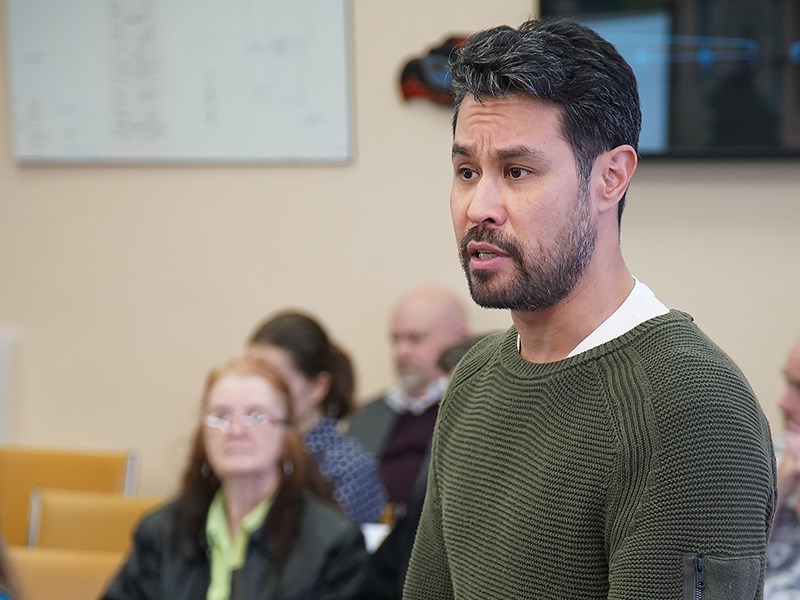Tourism on the Sunshine Coast is showing growth in several metrics, City of Powell River councillors were told recently.
Sunshine Coast Tourism executive director Paul Kamon appeared before committee of the whole on Tuesday, April 16, and outlined changes and challenges faced by the tourism industry on the Sunshine Coast.
He said Sunshine Coast Tourism is funded in part by local governments. City of Powell River provides the organization $28,000, which is part of $81,000 in total coming from local governments in the region. Kamon is now working with Tla’amin Nation to have them become a funding partner.
“The good news is we take your funds, we combine it with contributions from local industry and the municipal regional district tax – the hotel tax – and we pool that money together and take it to the province with the Destination BC Cooperative Marketing Program,” said Kamon. “They have a cooperative marketing program for destinations such as ours and we are able to get matching funds. We leverage all of that to create the [annual] marketing budget of $375,000.”
Kamon said the marketing is starting to shift toward showing the Sunshine Coast as a year-round tourism destination. Tourism is at capacity when there are events such as International Choral Kathaumixw, BC Bike Race and PRISMA, so marketing efforts are starting to focus on the shoulder season, spring and fall, where there are opportunities for growth.
“We are starting to show the coast in these seasons, not showing summertime photos, but we are showing winter and spring in our marketing materials to broaden the perception of the Sunshine Coast as a year-round destination,” said Kamon.
There is a robust media program in place and in 2018, 43 media outlets were hosted. This resulted in more than 300 travel articles in prime publications such as the Seattle Times, National Geographic, Traveller, Toronto Sun, National Post and The Globe and Mail, and on the CBC. Recently, a journalist from BC Business magazine was hosted, telling the story about Powell River’s economic revitalization.
The organization’s main web portal is sunshinecoastcanada.com, which, according to Kamon, has experienced tremendous growth in the past few years. In 2018 there were about one million page views, with nearly 250,000 users.
“I’ve been managing Sunshine Coast Tourism’s website for more than eight years and we’ve seen exponential growth,” said Kamon. “This is almost 10 times from what it was when we started.”
He said Sunshine Coast Tourism invested in a dynamic business referral engine so when people are on the website, they can find accommodations and get direct bookings. The website has created more than 82,000 business referrals.
Social media is a big part of the marketing efforts. They have more than 32,000 subscribed followers on the social media channels, which include Instagram, Facebook, Twitter, Pinterest and YouTube. There are more than 128,000 users of the hashtag #sunshinecoastbc.
Smartphones are transforming marketing. More than 70 per cent of traffic is now mobile. The majority, said Kamon, is video.
Kamon said a big question he is consistently asked when he’s in front of any local government is: how is tourism doing? He said it is a tricky question to answer because there are a number of different data points that provide indications but he cannot say precisely how many tourists visit the Sunshine Coast.
“It’s impossible, but we can look at ferry stats, accommodation stats and we can get an aggregate picture.” said Kamon. “I did a rough calculation based on some of the data I do have and roughly we’ve seen five per cent growth year over year for the last five years in room rentals.”
There has not been a lot of hotel development on the Sunshine Coast, although there are potentially three projects coming onstream. Short-term rentals have been helping accommodate visitors.
One major development that will have an impact on traffic to the Sunshine Coast is the ferry terminal redevelopment in Langdale and then in Horseshoe Bay. In the summer of 2024, it is planned to have two-ferry service on the Horseshoe Bay to Langdale Route. Passenger traffic on that route now is 1.4 million per year, which is 10 times the size of the Powell River to Comox route.
“When they add hourly service with two ferries you are going to see significant increase to traffic on the south coast and that is going to create more development pressure to the north coast,” said Kamon. “There are going to be some changes coming our way and I think we’re in a good position to reap some of the positives.”



